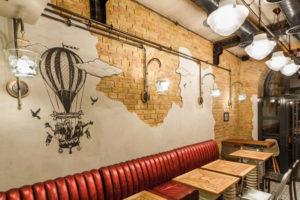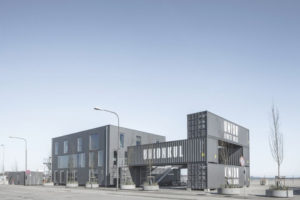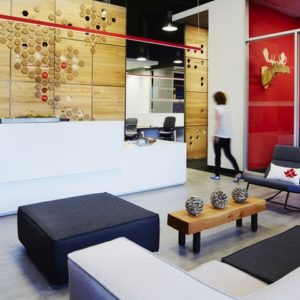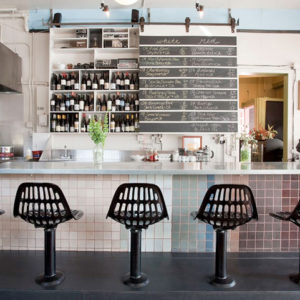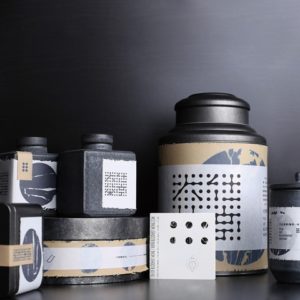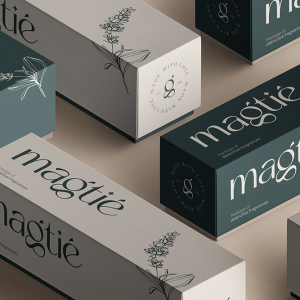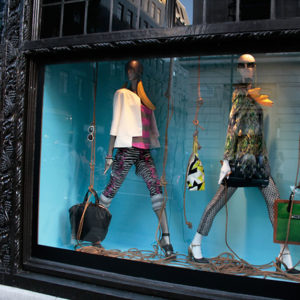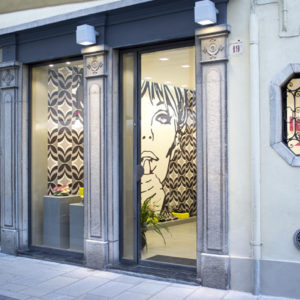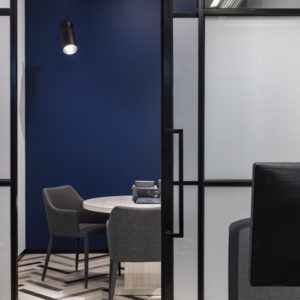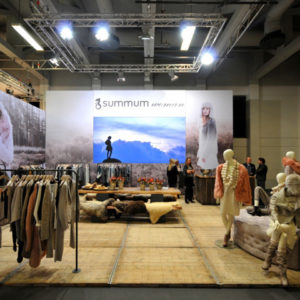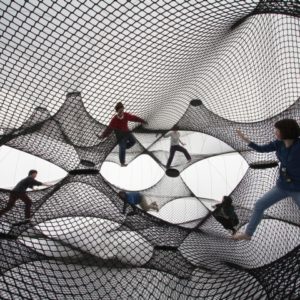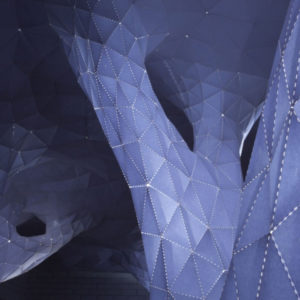
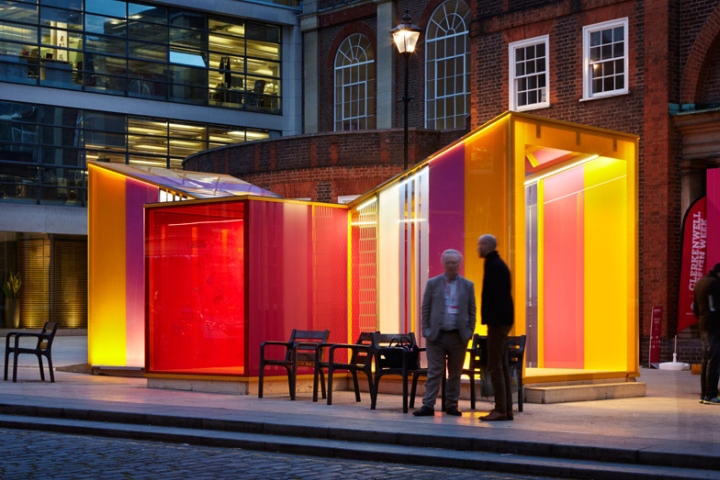

Clerkenwell Design Week 2015: Murano glass sweets provided the inspiration for this pavilion by London studio Cousins & Cousins, which features a mixture of coloured and patterned glazing.
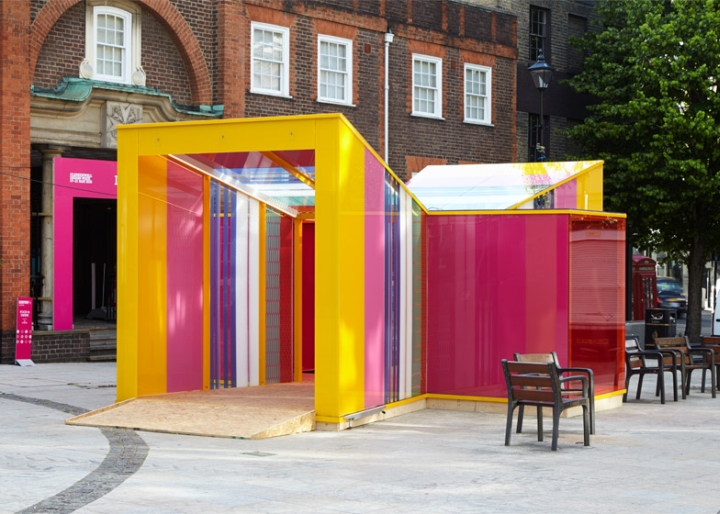
Installed in St John’s Square at the heart of London’s Clerkenwell, the temporary Glaze pavilion was created for the district’s three-day-long design festival on behalf of glass manufacturer GX Glass. The architects, husband and wife duo Ben and Jelena Cousins, decided to create a structure modelled on the glass sweets made on the Venetian island of Murano, which show off different glassmaking techniques. “We very much liked the glass sweets that you can find in Venice, with their multicoloured layers of glass,” Ben Cousins told Dezeen at the pavilion launch yesterday. “We thought, what better way to show off GX Glass’ full spectrum of products than to have a glass pavilion inspired by this beautiful Venetian glass sweet,” he explained. “So that was the genesis of the idea and it evolved into what we see today – this multicoloured jewel.”
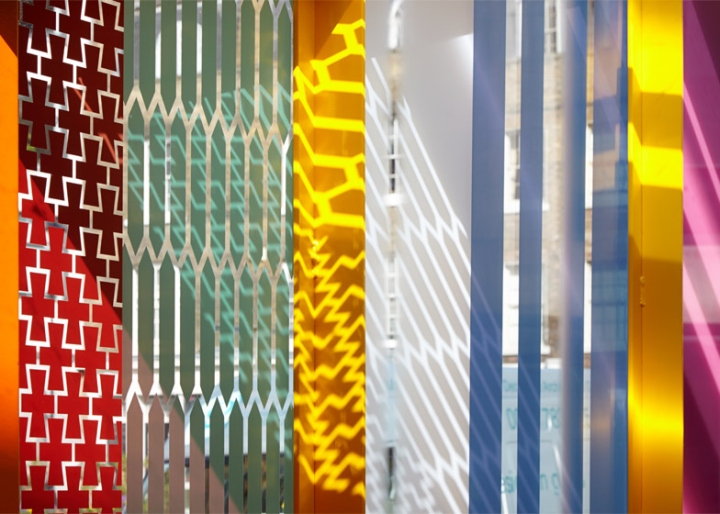
Named Glaze, the steel-framed structure features glass walls and a glass roof. The architects used both back-painted and ceramic-printed glass to create opaque and transparent surfaces. Some panels feature vibrant shades of pink and yellow, while others have been printed with various geometric patterns. “The two types of glass we use represent two different types of manufacturing,” said Cousins. “The glass manufacturer we worked with is known for coloured splashbacks, so we used that for the colour-backed glass,” he continued. “The more transparent panels use a ceramic-printed technology. That’s how we managed to create all the patterns on the glass.” Two tapered ends give the pavilion entrances on both sides, but are also reminiscent of the splayed ends of a wrapped sweet.

“One of the key things that Jelena was really keen on achieving here was the effect of narrowing perspective as you walk through,” added Cousins. “The whole structure is tapered, so it gets smaller and narrower as you arrive into the centre of the space. Then it opens up again in the middle. We tried to keep it as slender as possible – which is always the battle with structural engineers – to retain the elegance of the structure, which I think we’ve achieved really successfully,” he said.
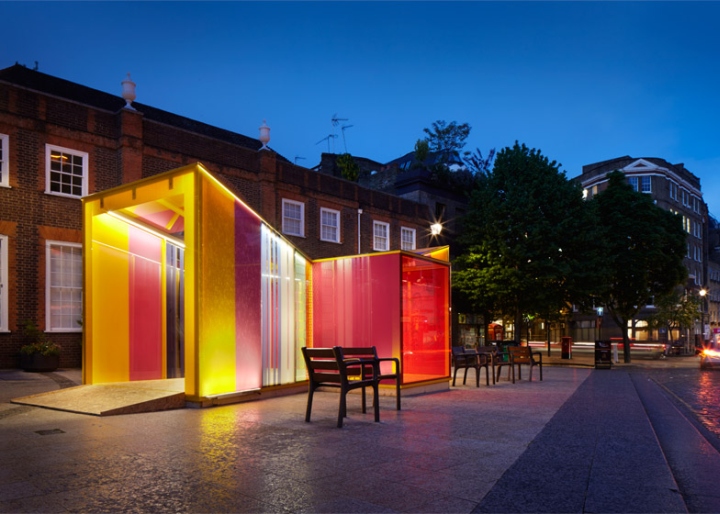
The pavilion remains in place for the duration of Clerkenwell Design Week and is being used to host a programme of events, including drawing workshops. Some of the glazed panels are also magnetic, so paper images can be mounted onto the walls. Illustrators have also been invited to draw straight onto these panels, as their marks can be easily wiped away. Illustrators have been invited to draw straight onto the MagnX magnetic panels, as the glass surface allows for the designs to be easily wiped away, as well as allowing for paper images to be stuck to the walls. Once the event is over, the glazed components will be demounted and recycled.
Design: Cousins & Cousins
Photography: Jack Hobhouse
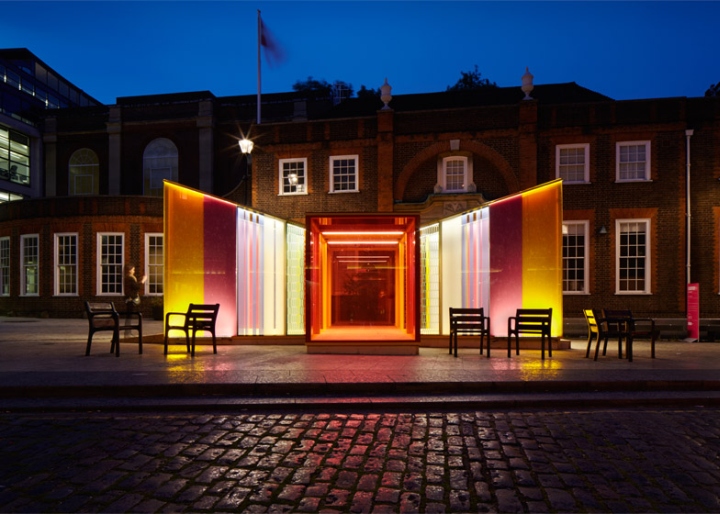
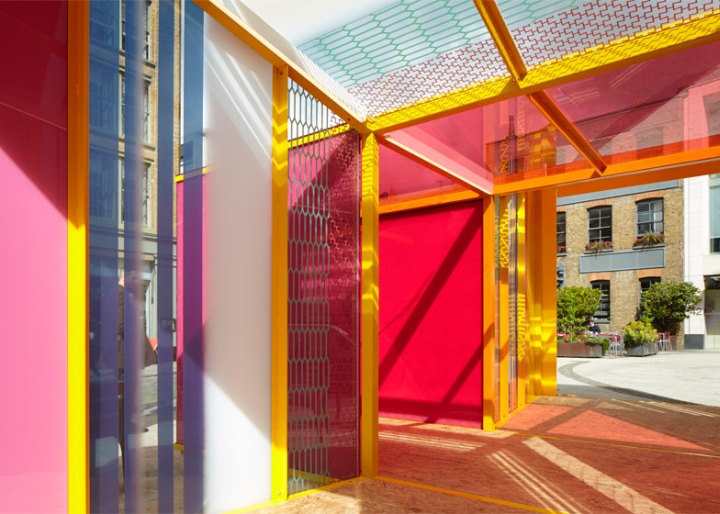
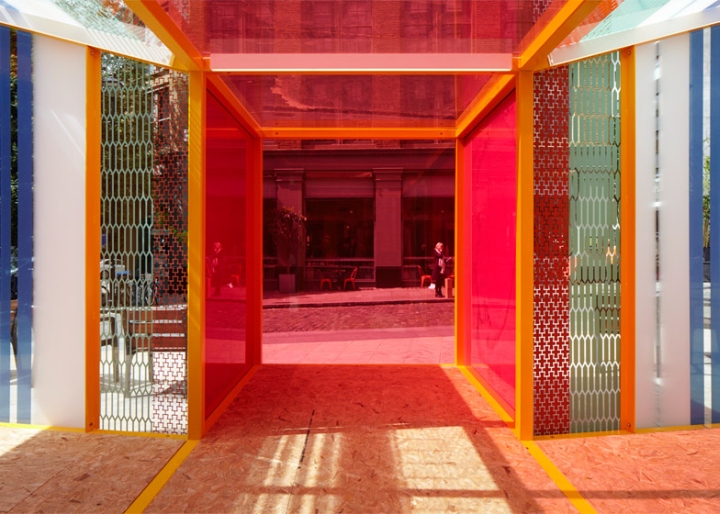
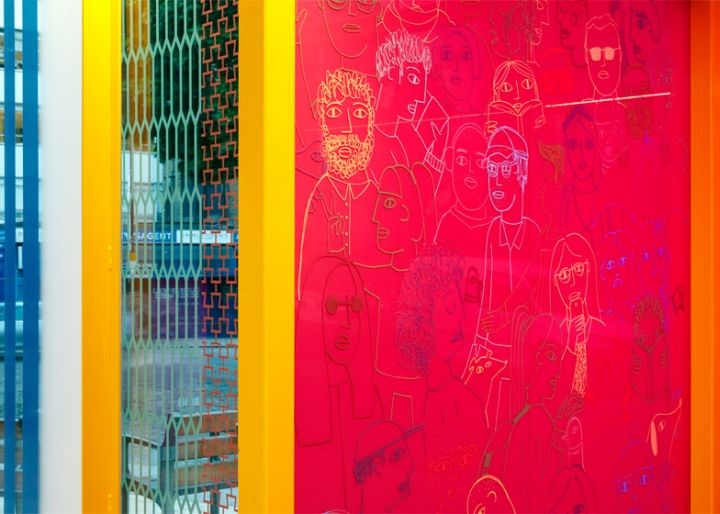
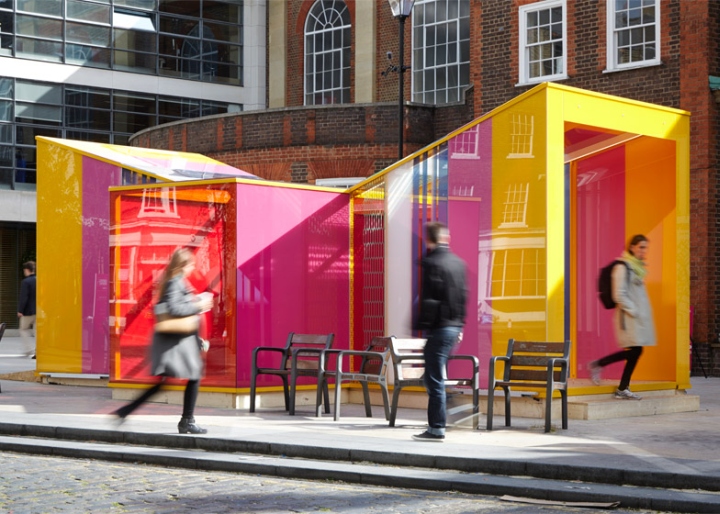
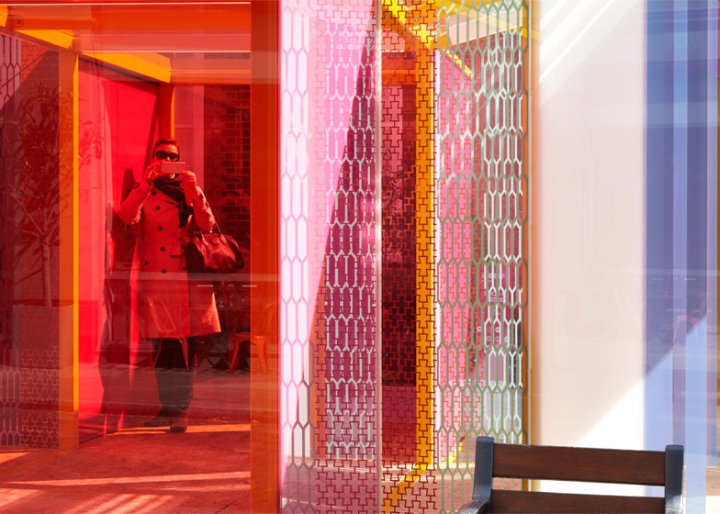
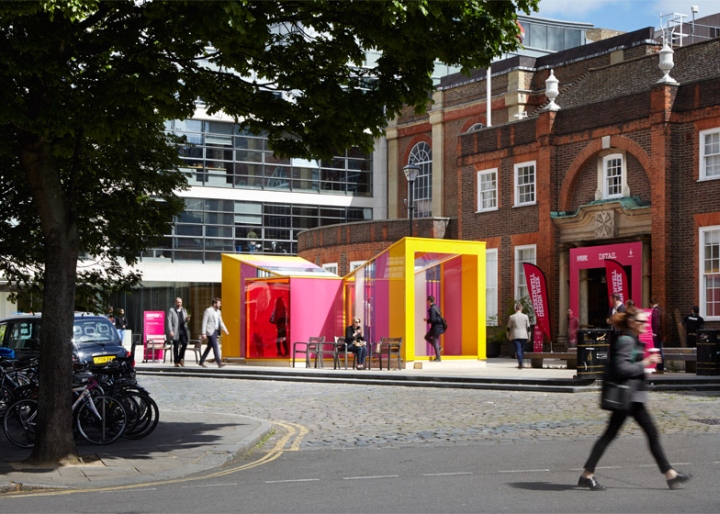
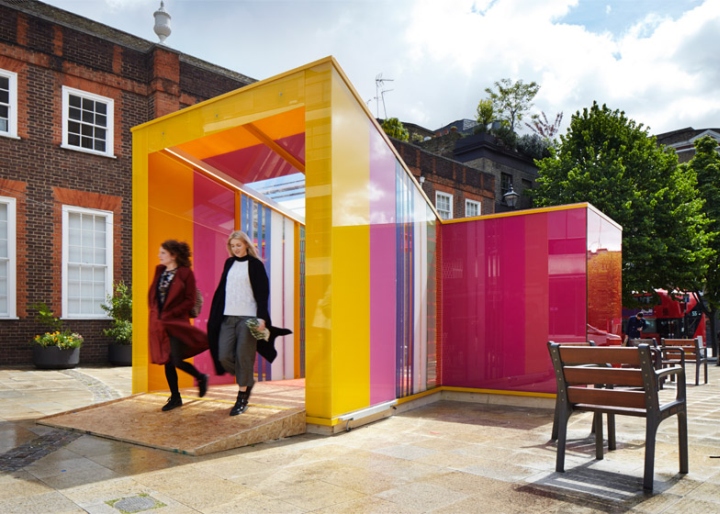

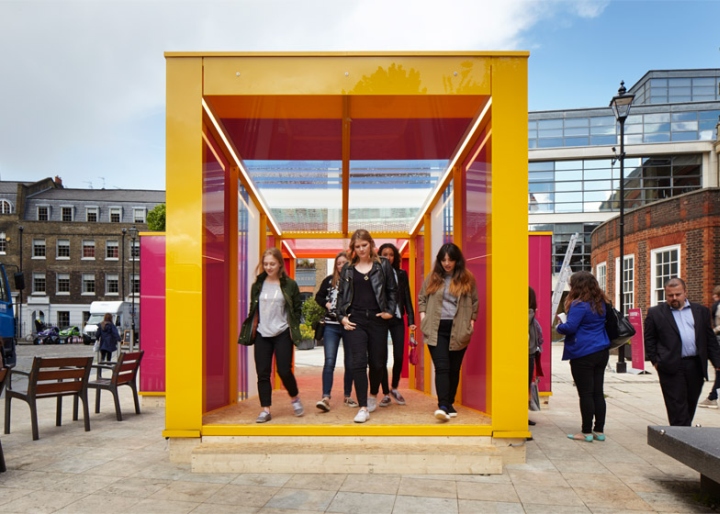
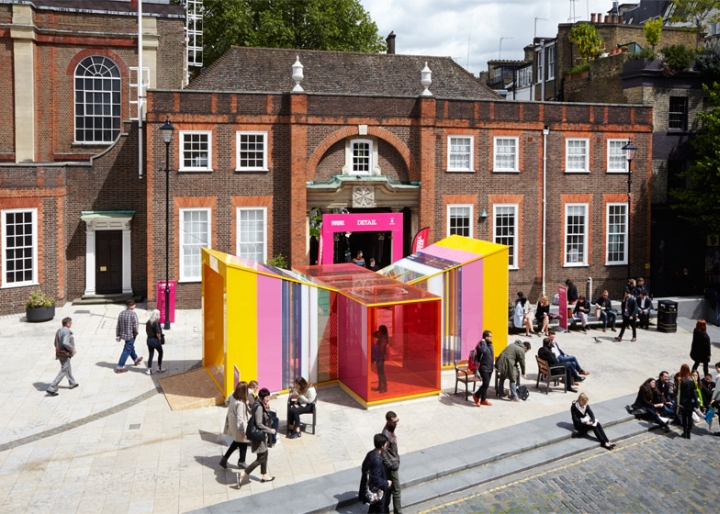
via Dezeen















Add to collection
